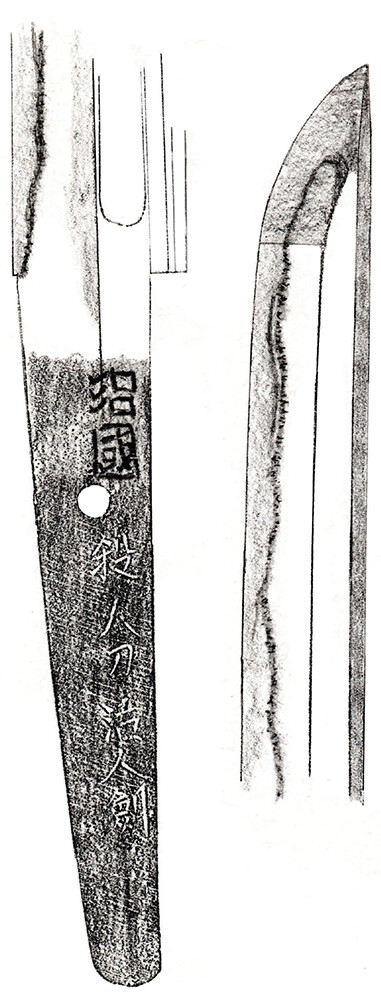Excellent shinogi-zukuri wakizashi with mitsumune having a kinpun-mei (gold lacquer attribution) to the Shinkai student Harukuni.
HARUKUNI Hokuso 治国北窓 [ Tenna 1681-1684 Settsu ] Shinto-Chujosaku
He was called Sōbei (惣兵衛), he was a student of Inoue Shinkai (井上真改), gō Hokusō (北窓), he worked in the style of Shinkai and moved later to Hyūga province. His works are in ō-midare with ara-nie or a notare in ko-nie-deki, the jigane is dense and tight. The ji-hada is very tight itame that is mu-ji hada with wildish aranie that covers most of the ji and some of the shinogi-ji. There are blades from the Enpō (延宝, 1673-1681) to the Tenna era. Harukuni’s works are very rare and this especially applies to katana.
Nice and healthy blade with profuse ji-nie throughout. Please see attached photos. The blade has a 21″ nagasa. The hamon is a notare based one in ko-nie and sprays of ara-nie. Boshi is ko-maru. Jihada is a tight ko-itame. The blade is ubu and in addition to the kinpun-mei also includes an owner’s inscription and a Yagyu adage inscribed. I have attached the owner’s notes and research below.
小河内住左衛門源信敬所持之 = Ogouchi jū Saēmon Minamoto Nobutaka/Nobuyuki/Shinkei (all 3 readings possible) shoji kore
殺人刀活人剣 = setsunintō katsujinken – A sword that takes life also gives life
The Yagyū Shinkage Ryū is one of the most honored and venerable systems of classical swordsmanship with a history that stretches back 450 years. Known as the swordless style, which combines swordsmanship and zen. Besides its formidable technique, it is famous for an adage: setsunintō katsujinken 殺人刀活人剣. The literal reading is “the sword of life; the sword of killing.” A common translation is slightly different: “the sword that takes life is the sword that gives life.” Yet the deeper meanings are not straightforward. The aikidō sensei and Zen priest, Furuya Kenshō, noted that it was regarded as a kōan, a teaching riddle intended to provoke enlightenment through prolonged contemplation.










